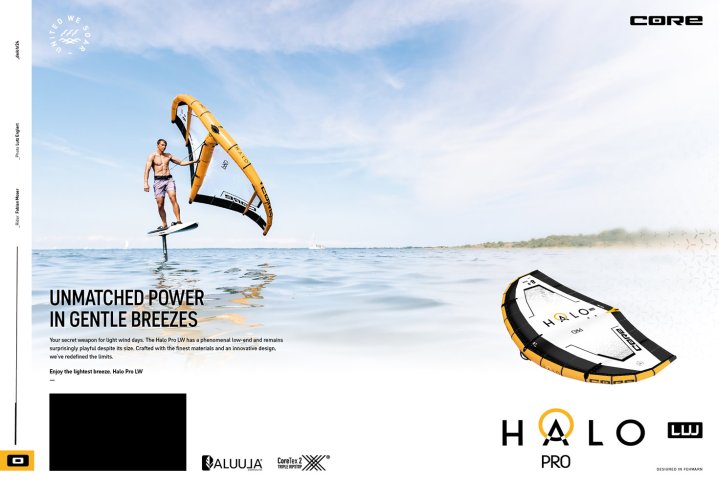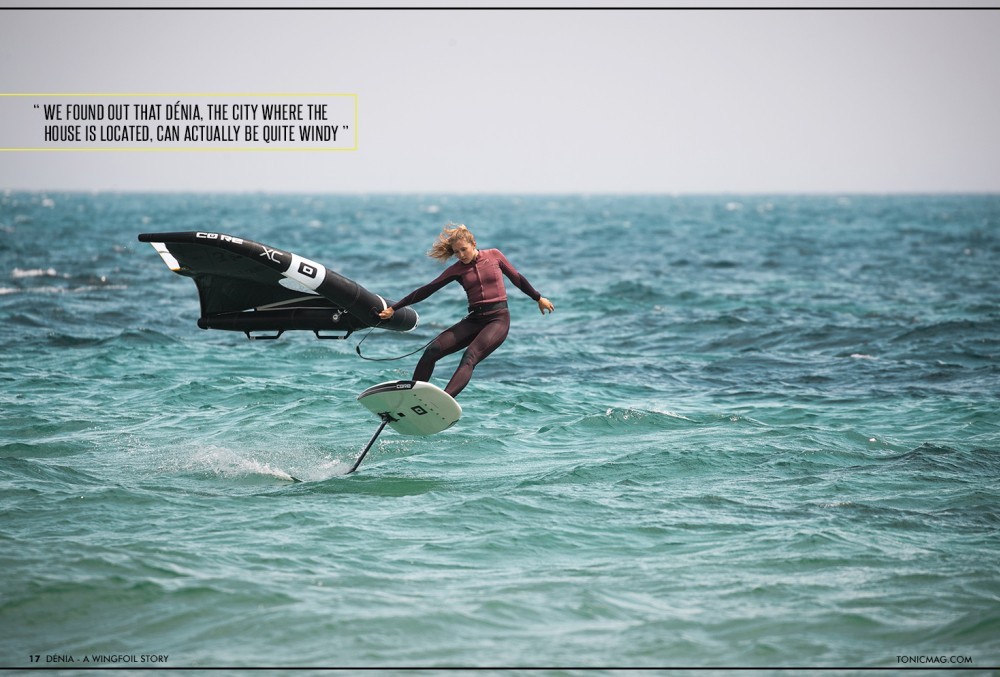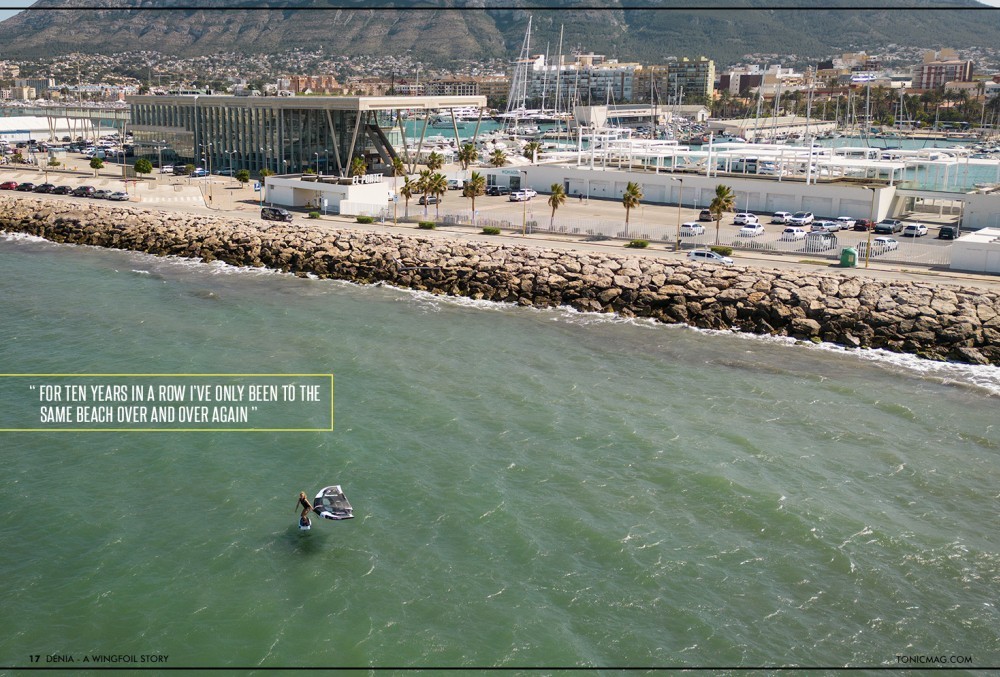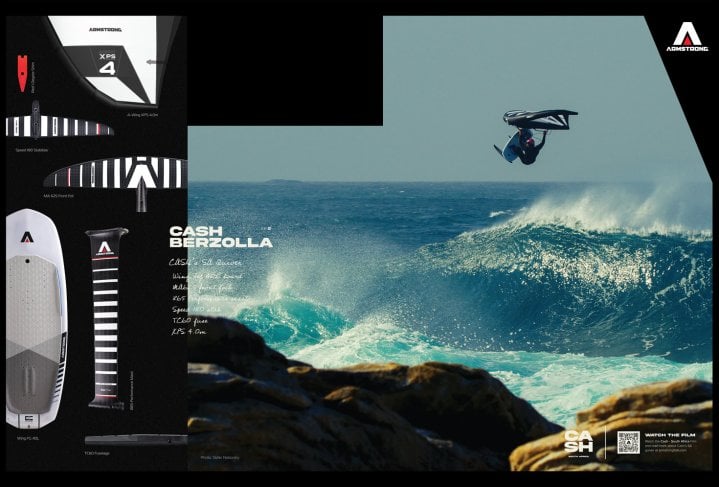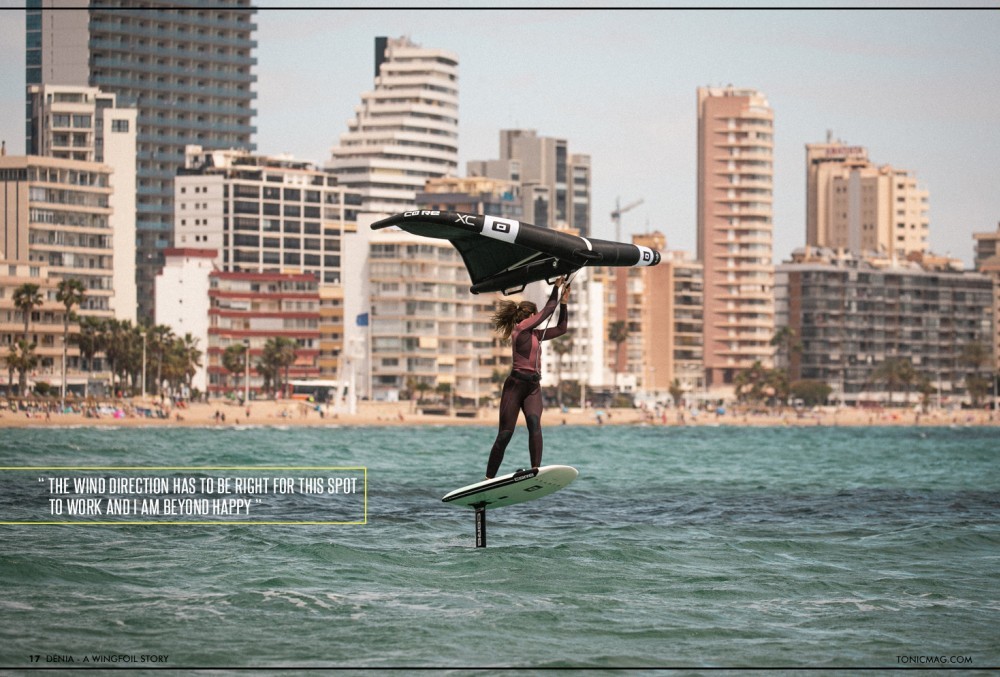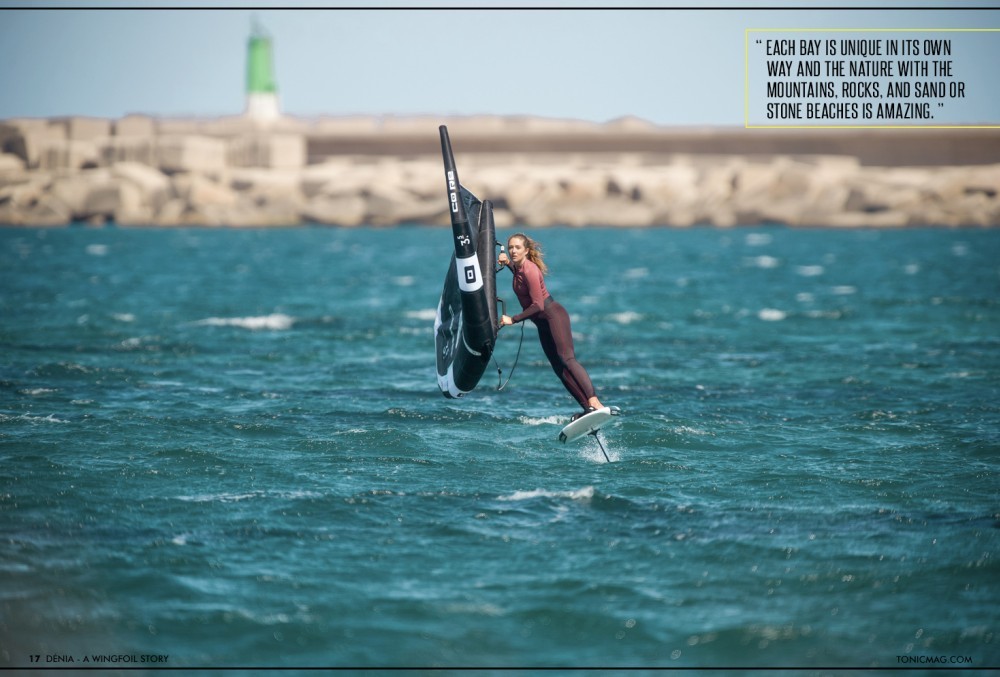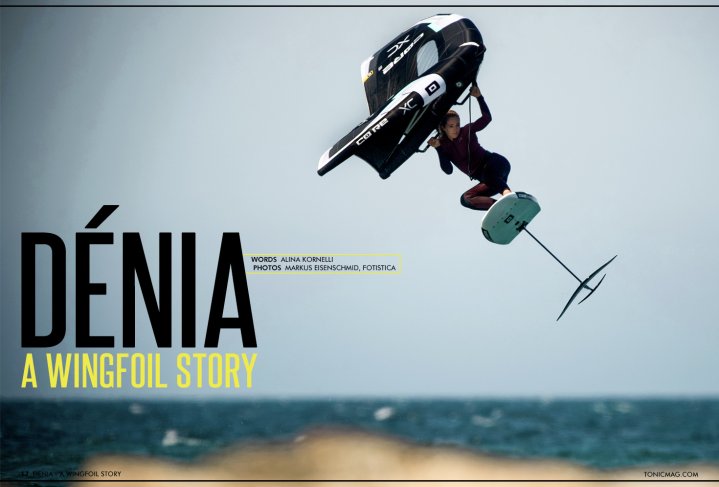
Dénia - A Wingfoil Story
Issue 17 / Mon 4th Sep, 2023
Alina Kornelli’s yearly summer trips to Dénia, Spain, lead to a love of watersports and the ocean.
As the daughter of a former windsurf world champion it was just a matter of time until I got on the board. At the age of ten, I was finally strong enough to hold onto a sail and I experienced windsurfing myself after having watched my dad from the beach since I was a baby. Two years later I jumped on a kiteboard, from which I explored some of the most famous kite spots in the world over the past few years. Ever since the sport of wingfoiling was invented, I couldn’t wait to try it out and now I can’t think of travelling without my wingfoil equipment anymore. It opens up a new possibility to surf new spots because you can jump in the water more easily than with a kite.
I was born in Munich, a city that is not surrounded by any hotspot for wind sports. My family’s choice of holiday destinations was rather based on wind than anything else to compensate the not-so-ideal conditions in my German hometown. It just so happened that my grandma had bought a house in Spain years before my dad even started windsurfing. We found out that Dénia, the city where the house is located, can actually be quite windy - that was like a home run for us.
The area on the shores of Alicante is called Costa Blanca and covers beaches, coves, and cliffs of 18 towns, starting with Dénia in the North and finishing with Pilar de la Horadada in the South. It’s divided between Costa Blanca North and Costa Blanca South. Costa Blanca North goes from Dénia to Alicante with its big resorts like Altea, Calpe, or Benidorm, which attract millions of tourists annually.
As my grandma’s house is located in Dénia, this city became my second home and I spent four weeks every summer on my windsurf and kite surf equipment as a young girl. After not having been in Spain for two years, I’m coming back now with my new wingfoil equipment to see what the region of Costa Blanca North has to offer for not only tourists but especially for watersport lovers, especially wingfoilers!
For ten years in a row I’ve only been to the same beach over and over again:
Playa Escollera Norte en Dénia
This kitespot is located in a port area in front of the urban centre of Dénia which makes it super unique. The small bay is protected by stone piers which calms the rough sea right behind it down to a nice flat water spot that is fun for every beginner, freestyler, and free rider. You will find thermal winds from April to September with a strength of 12 to 20 knots, starting in the afternoon and lasting till sunset, mostly blowing from the South-East. In the winter season, the Northwest wind kicks in and the wind blows with a strength from 18 to 25 knots. I usually prefer waves for my wingfoil sessions, but here I have a great time improving my tricks in the flat water.
After ten years this harbour spot has become a little too monotonous, don’t get me wrong I still love this spot, but I talked to some locals on the beach who know the area well and I wanted to find some new challenging spots.
They talk about more beautiful spots along the coastline of Costa Blanca, that I’ve never seen before even though I had spent so much time there. The big advantage is, those wind directions that don’t show up in Dénia because they’re covered by the land, work just fine at the spots called Altea or Calpe, which are a 30-minute drive each.
I am lucky and the wind forecast shows South-West, which is perfect for Calpe. Calpe or „Calp“ to the locals is instantly recognizable for the huge limestone rock sat on its beach. The rock is called the „Penon de Fach“ and measures over 600 m in height. It can be seen for miles along the coast. There is a long sand beach on both sides leading away from the rock, which makes this area so magnificent.
The wingfoil beach is called Arenal-Bol and the water conditions vary from chop to small waves, which is perfect for advanced wingfoil tricks and wave riding. The water is crystal clear and the view from my wingfoil board is special with the large rocks and the waterfront in front of me. The wind direction has to be right for this spot to work and I am beyond happy, that I can soak up the energy Calpe gave me that day.
One more wingfoil spot to experience during my stay on the East coast of Spain located South of Calpe is called: Altea. The name Altea comes from the Greek: Altahia (I heal) and from the river Algar (the river of health). Altea is a big bay surrounded by small rocky mountains with an over 5 km long white stone beach. The mountains in the back with the combination of the white stones, the blue water, and the old little white town in the middle of the bay create a special traditional Spanish atmosphere. The wingfoil beach is called Rio Altea, the water is choppy, but it gets deep super fast, which makes it a perfect spot, especially for foil boards.
I feel very fortunate in what the region Costa Blanca North has to offer. Each bay is unique in its own way and the nature with the mountains, rocks, and sand or stone beaches is amazing. You always look for nice sceneries and backgrounds for your wingfoil action pictures in combination with a constant breeze at a spot to have fun on the water. This region offers all of that.
If you're thinking of Spain and wing foiling, the famous spots which come to your mind are Tarifa or the Canary Islands. But Spain has a coastline of 7268 kilometers, so my advice for you is: go and check it out!
Everyone always asks me how windsports became my profession as I live in Bavaria. Since I took my first and biggest improvements down in Dénia my answer nowadays would definitely be: Dénia is my home spot, even though I don’t live there all year round.
By Alina Kornelli


